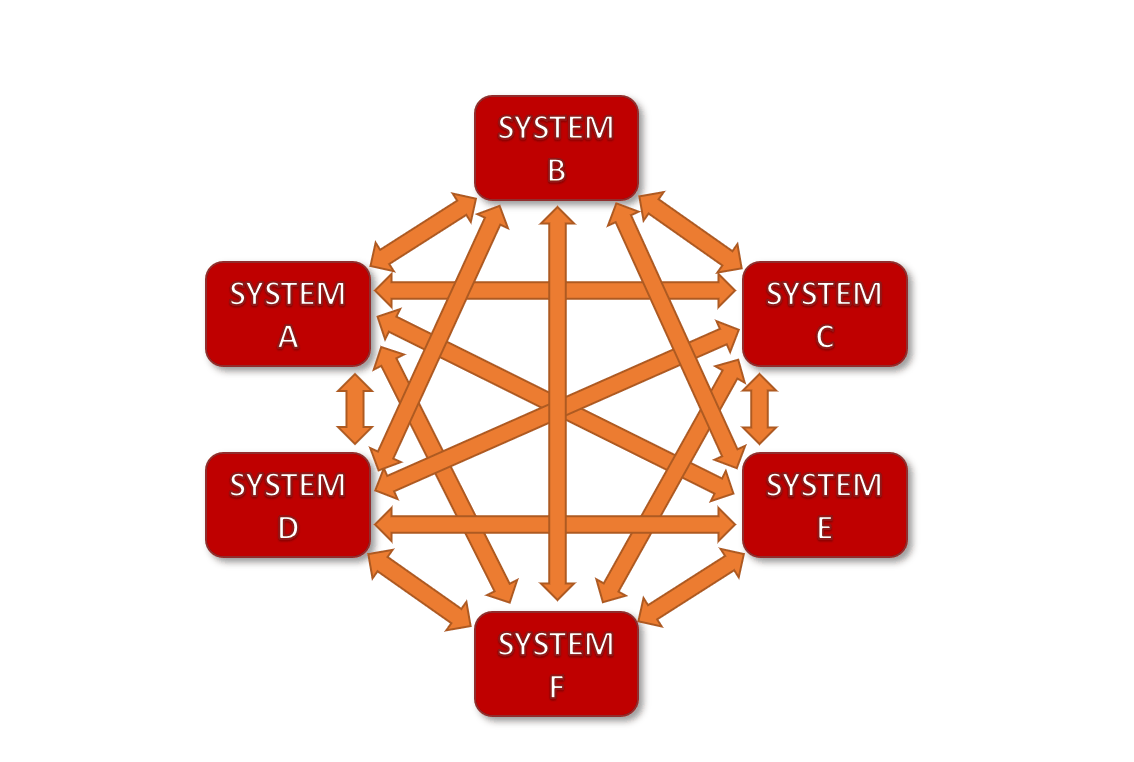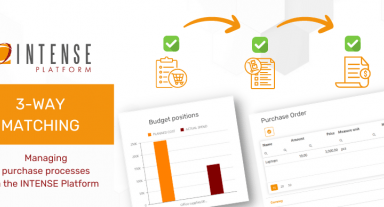
ESB (Enterprise Service Bus) – Application and benefits
Maciej Łamasz
Data integration seems to be one of the most important challenges faced by modern managment companies today. Thanks to this process, it is much easier to handle individual areas of business operation, which in turn leads to increased efficiency of operations and development of the entire enterprise. One of the noteworthy tools that are able to ensure high-quality data integration is the ESB integration bus.
Gone are the days when companies implemented one software to handle all business processes. over. Currently, it is standard procedure to implement several systems dedicated to specific functional scopes; such approach provides companies with solutions that comprehensively support their needs. A company is afterall an organism whose individual elements must work closely together. It is no different in the case of IT systems operating in a given enterprise. The ideal scenario is one in which all systems are able to exchange individual information and compliment each other.
In such situations, system integration often turns out to be troublesome. It is then necessary to create a structure that allows for cooperation between all implemented systems. A solution used in such cases often consists of the creation of a network of connections between individual databases. As you can easily guess, each newly introduced database coerces the IT department to create a number of subsequent integrations. Such a solution is not only impractical, but also costly to use. Each of these connections must be updated on a regular basis in the case of the development of individual IT solutions operating in the company.
In this situation, it is worth considering the implementation of the integration bus (ESB - Enterprise Service Bus). It is a solution that significantly reduces the chaos caused by the number of connections. Through this platform all data is generated in the IT structure of the company flow. To put it simply, it can be said that the integration of a new system with the company's infrastructure is limited only to handling communication with the data bus, instead of communication with all other systems. Undoubtedly, maintaining such a platform is much cheaper than maintaining one, which is a network of interconnections.

Also, the replacement of systems operating in the company is not a problem if we already have an ESB data bus. Often, decisions about the purchase and implementation of individual systems are not implemented into practice. When employees realize that the most reasonable solution is to replace the software, decision makers and IT very often delay or even do not take into account the possibility of replacing systems with improvised ones. The reason for such behavior is not only the reluctance to re-invest in the IT system, but also the difficulty of replacing the software from the integration point of view. The implementation of a new system is directly related to the replacement of all integration interfaces, so once again we face the problem of time and costs associated with this type of operation.
An important aspect that deserves special attention is the monitoring of integration. ESB class systems have built-in tools that offer very large possibilities of logging each activity performed through the data bus and solving possible integration conflicts. Thanks to this solution, we have at our disposal information about each object that has been processed by the data bus in any way, along with its result. If any unforeseen scenario occurs, an appropriate annotation will be saved in the monitor, which allows us to diagnose and eliminate the problem.
ESB is a flexible tool, as it is not limited to integration within one type of software. It can be used to integrate ERP systems, but also e-mail clients, B2B systems, sales, warehouse, production systems, external systems of courier or forwarding companies. Using the ESB data bus also allows clients to establish a connection with online stores. The bus, thanks to a precisely defined data exchange interface and technical documentation, enables effective integration with virtually any system without the need to know its structure. An additional advantage is the fact that the integrations can be performed by various suppliers, and all of them will function according to consistent rules in a homogeneous IT environment.
An investment in a data bus is not only a matter of preparing financial, but also human resources. The ESB bus is a technically very complex solution, which means that both the implementer and the IT administrator in a given company will need to have specialist knowledge that will allow for successful implementation and reasonable use of this software. On the other hand, the design and concept of ESB systems allows for phased execution of integration, significantly reducing the risk of the entire operation.
To sum up - the ESB integration bus is a tool that will work greatly if you need to connect various IT systems that generate a large amount of data. The bus enables unification of integration patterns, which is why it works best in the case of a large number of databases, significantly reducing future financial outlays in this area.

 Unia Europejska
Unia Europejska


